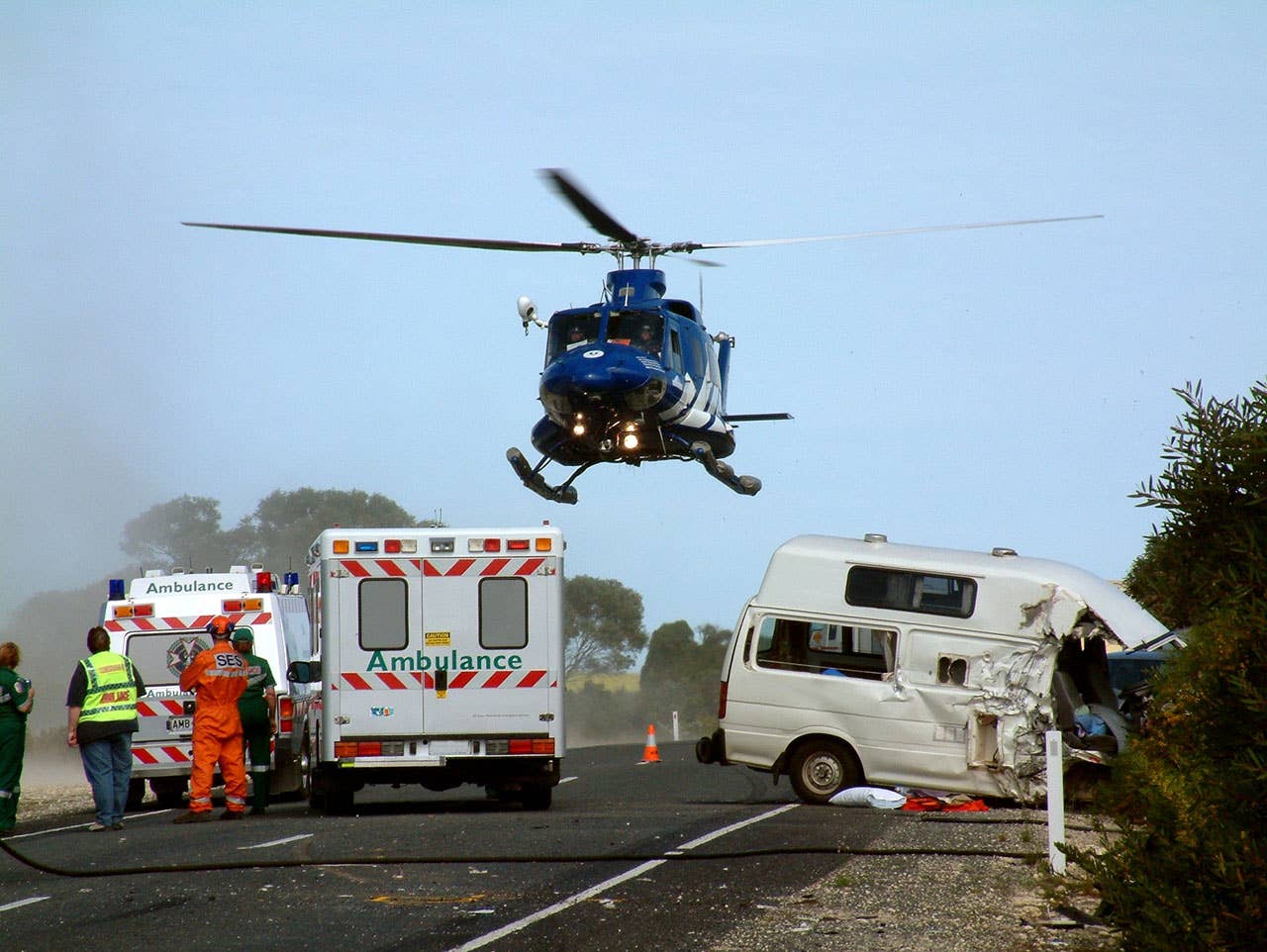Plane Facts: MedEvac
The world of aerial rescue is older and richer than you would ever imagine.

From rescuing wounded soldiers on the battlefield to extracting vehicular accident victims, air ambulances have been saving thousands of lives for more than 100 incredible years. Their ability to reach people fast and access remote areas even in challenging terrain gives them a clear advantage over ground EMS vehicles. Some hefty downsides exist, however---namely with steep costs and safety hazards. The pressure to respond and save lives, even in adverse weather conditions, has led to many tragic, and often fatal, incidents. Accident rates within the air medical service industry are almost double that of general aviation. This has led to a recent revamp of safety protocols and technology. Still, the life-saving benefits far outweigh the risks, with studies showing an almost 60% boost in survivability of trauma patients when transported by air vs. ground.
On a personal note, if it weren't for a life-saving helicopter whisking me away from a dark, remote country road many years back, I wouldn't be able to share these interesting facts with you today!
Air Medical Services First Conceptualized: 1870
Aircraft: Hot air balloon
Purpose: Transport injured soldiers during Siege of Paris
First Official Air Ambulance Flight: Turkey, 1917
Aircraft: de Havilland DH9
Operated By: British Royal Air Force
Time It Would Have Taken To Drive To Hospital: Three days
Time It Took To Fly: 45 minutes
How Aircraft Was Set Up: Stretcher secured behind the pilot
Military Advantage: Significant reduction of troop mortality
Year This Service Became Available To U.S. Civilians: 1947
Primary Aircraft Used Today: Helicopters
Advantage Over Other Aircraft Types: Easier takeoff/landing access
EMS Helicopters In Service: 700+
Participating Medical Centers: >200
Key Services: Patient & donor organ transport, delivery of non-emergency medical services to remote areas
Typical Crew: One pilot, two medical personnel
Air EMS Pilots & Medics In U.S.: 21,000+
Flight Hours Required To Become Pilot: 1,000
Average Salary: $58,790/year
Average Medic Salary: $71,635
Cost Of A Single Ride To Patients: $15,000-$36,000
Compared To Ground EMS: $800-$1,200
Covered By Insurance: <30%
Amount Survivability Increases When Traveling By Air Vs. Ground: 57%
Average Flight Length: 52 miles
Flights Per Day In U.S.: >1,000
Patients Flown Each Year: ~400,000
Biggest Concern: Safety
Accident Rate: 5 accidents/100,000 hours
Fatal: ~40%
Safety Considerations: Weather, distance, terrain, landing site hazards
Recent Safety Improvement: Night-vision goggles required
Reason: Helps pilots avoid power lines, trees and other hazards
Motto Used For Flight Cancellation: "3 to go, 1 to say NO"
Patient Survivability Considered In Decision: No
EMS Pilots Who Say They Feel Pressured To Complete Flights: > 1/3
Program Designed To Counter This: "No Pressure Initiative" (NPI)
Founder: National EMS Pilots Association
How NPI Works: Offers layers of protection, including risk assessment and other decision-making tools
Safety Recommendation Of NTSB: More simulation pilot training and greater investment in cockpit technology

Subscribe to Our Newsletter
Get the latest Plane & Pilot Magazine stories delivered directly to your inbox






